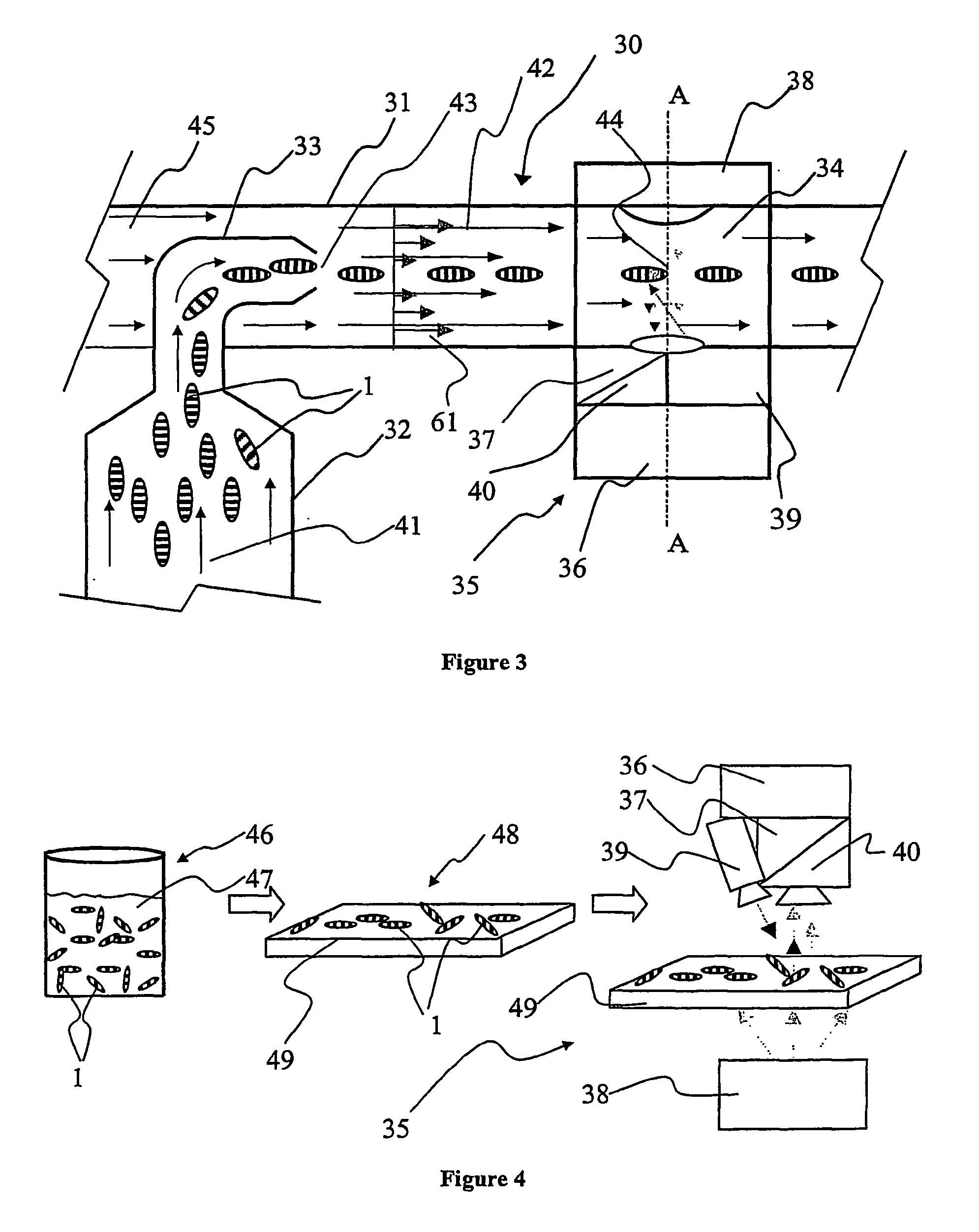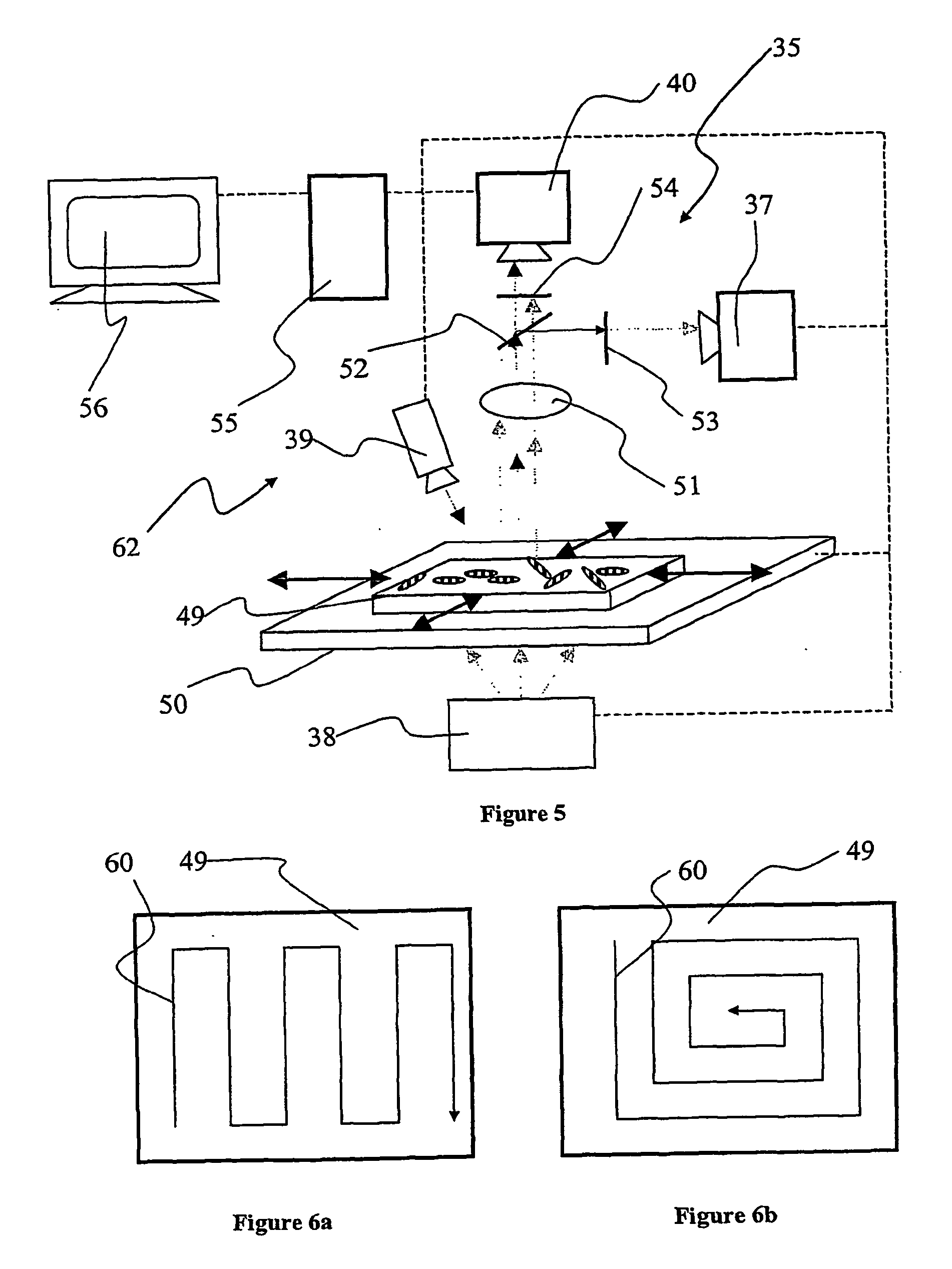Biochemical method and apparatus for detecting genetic characteristic
a biochemical and genetic characteristic technology, applied in the field of biochemical methods and apparatus for detecting genetic characteristics, can solve the problems of limiting the potential application of genetic characterization purposes of microarrays, difficult and expensive components for their execution, and increasing complexity of fabrication of such microarrays, so as to achieve low cost and high throughput
- Summary
- Abstract
- Description
- Claims
- Application Information
AI Technical Summary
Benefits of technology
Problems solved by technology
Method used
Image
Examples
Embodiment Construction
[0044] In FIG. 1, an illustration of a preferred embodiment of the invention is provided. There is shown a single support 1; such a support will also be referred to as a "micro label" in the following description. The support 1 can be fabricated from a wide variety of materials ranging from polymers, glasses to metal alloys, but is preferably fabricated from a metal and most preferably fabricated from aluminium. The support 1 incorporates a sequential identification 2 which can be in the shape of at least one (or any combination thereof) of grooves, notches, depressions, protrusions, projections, and most preferably holes. The sequential identification 2 is suitably a transmission optical bar-code. The bar code 2 is implemented as a spatially sequential series of holes extending through the support 1. Such holes can be of varied shape and size. They are also capable of providing a very good optical contrast as solid areas of the support 1 are substantially non-transmissive to light ...
PUM
| Property | Measurement | Unit |
|---|---|---|
| length | aaaaa | aaaaa |
| length | aaaaa | aaaaa |
| length | aaaaa | aaaaa |
Abstract
Description
Claims
Application Information
 Login to View More
Login to View More - R&D
- Intellectual Property
- Life Sciences
- Materials
- Tech Scout
- Unparalleled Data Quality
- Higher Quality Content
- 60% Fewer Hallucinations
Browse by: Latest US Patents, China's latest patents, Technical Efficacy Thesaurus, Application Domain, Technology Topic, Popular Technical Reports.
© 2025 PatSnap. All rights reserved.Legal|Privacy policy|Modern Slavery Act Transparency Statement|Sitemap|About US| Contact US: help@patsnap.com



